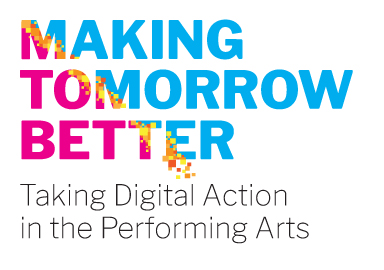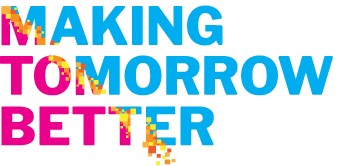Contact(less) East 2020: A Case Study
Online Performing Arts Conference Design and Results
By Lynn Feasey (Points North Creative). In conversation with Atlantic Presenters Association’s Executive Director Laurie Gillis, and Manager of Operations and Programs, Lisa Gleave. February 2021
Contact East is the Atlantic Presenters Association’s (APA) hallmark event and Atlantic Canada’s premiere performing arts booking conference. For over 45 years, this conference has brought together performing arts presenters and new and in-demand, tour-ready arts performers to showcase contemporary and classical music, dance, theatre, and youth-oriented programming. Since 2001, the conference has been successfully run by APA. Catering primarily to regional artists, this conference represents significant professional development and live showcasing for performing artists, presenters, managers and agents from across the globe.
Considered among peers as a ‘do-not-miss’ conference, many plan their year around the conference, relying on in-person networking and professional development opportunities.
In the performing arts ecosystem, personal relations are paramount. Presenters rely on live showcases to gauge how their live audiences may receive a particular artist or group. Agents meet artists, artists meet one another – the industry relies heavily on this event to cultivate and foster relationships.
Event components include high quality showcases, provocative speakers, professional development sessions, informal meetings and networking. Contact East provides an essential and inspiring experience for delegates, who encompass Canadian and International showcasing artists, performing arts presenters, managers, and agents from regional, national and international levels.
PDF Series (for download)
- Fundamentals of Great Online Conferences: A Practitioner’s Perspective on Design and Technology
- Streaming Technology Equipment Kit for Speakers
- Online Conferences: Essential Tips for Speakers Or How to Achieve True Participation and Learning Online
- Online Conferences Thrive on Attendees’ Participation: From ‘Attendee’ to ‘Participant’ in 7 steps
- Accessibility and Inclusion: Creating Better Online Conference Experiences for More People More Often
- Financial Considerations of Online Conferences: Cost Drivers and Revenue Streams
CASE STUDIES
Conference Design & Delivery
Planned for September 2020, Contact East was set to host an in-person symposium and performing arts showcasing marketplace in Halifax, NS. Rather than postpone this annual hallmark event, APA decided to reimagine the conference, and move it online, to host Contact (Less) East. “Doing nothing was not an option”, stated APA’s Executive Director, Laurie Gillis.
Key Conference Objectives
- to connect the sector when they weren’t able to gather
- to provide meaningful professional development opportunities that did not necessarily focus on the pandemic
- to produce an event that served the needs of current members
What changed
Platform: Conference moved online using Zoom
Conference Fees: Reduced
- Past in-person conference: $350 member and $400 non-member / per delegate
- Online conference: $50 / per organization
Schedule/Program: Professional Development only
- Showcases were not included (normally about 35 performing arts groups showcase)
- Four professional development sessions over two days
- Two social events
What stayed the same
- Registration service: Ticket Pro
- Conference Communications: in-house
- Duration of professional development sessions
- Opportunities to ‘gather’ socially
Implications for Funding Future Events
Organizers exceeded their expected revenues from online registration by $1,000, for a total of $3,500, as compared to $25,000 for in-person registration fees. However, registration for the online conference did not cover the expenses, nor was there any sponsorship funding for 2020. Funding from the provinces was also diminished due to funding programs being frozen at that time. While APA was able to shift budget to cover the overall expenses, they did not receive the funding they would normally get for travel expenses, to spend on other activities.
This will need to be looked at for future blended conferences. Expenses incurred for the online version will need to be covered. At this time, it is unknown what this looks like in terms of offering both an in-person and online showcase conference. What type of expenses will funders cover? Will it be feasible to offer a blended event in the future? What opportunities exist now, that did not before COVID-19? What new opportunities are arising? What needs to be done now, in terms of advocacy, logistics and developing new event production skill sets, to address these questions?
2020 Online Registration
167 individuals from 77 organizations
Revenue: $3,500
Pre-Covid Target
Registration: 180
Revenue: $25,000
“Two sessions per day would be about all I could take in of a web conference. This was paced perfectly.”
Contact(less) East participant
Lessons Learned
Programming
Since a large part of Contact East is about showcasing and networking, APA had to shift gears in terms of the program they offered for the 2020 conference. They made a decision to focus on topics surrounding social justice/change in the performing arts and found innovative ways to connect people socially. The choice to spread the presentations over two days, to be mindful of people’s tolerance of screen time, proved to be a good decision.
hile the pandemic made it impossible to physically present showcases in 2020, COVID-19 did not drive the content of their programming. The conference team reviewed past survey responses, met with their professional development committee and landed on a conference program that balanced learning opportunities with highly relevant topics, such as social justice/change through arts presentation. The program was fairly straightforward to deliver through Zoom, leaving any significant technical issues from more complex event tools aside.
Review and Update Registration Process
APA has an established registration process through Ticket Pro, which they continued to use. Even though registrants received the login information directly via an “online ticket”, many felt the process was ‘a bit clunky.’ As a result, APA and Ticket Pro plan to make the process easier for future events.
Having organizations register versus each individual participant within an organization, they were unsure of the size and variety of their audience. Having this knowledge would allow for effective use of break out rooms in future, along with better informing speakers of who their audience is.
They attribute the success of registered attendees being able to sign in and follow the schedule, to regular pre-conference communications. APA sent out emails about 10 days beforehand, along with reminders and sending the links on the morning of each day. In addition, the ticketing system they use, Ticket Pro, also sends out the information, so it can be found in two places.
Because this is a close-knit community, people feel comfortable to reach out to staff if they can’t find a link or if they are missing information. Dedicated staff are on call prior to start times to manage any last-minute requests.
Accessibility
The immediate need to move online highlighted the importance of digital accessibility. APA is committed to ensuring content is accessible to everyone.
Post-pandemic, APA plans to continue offering online content and will need to look into digital accessibility aids such as ASL, closed captioning, screen readers speech to text software, so this does not become a last-minute request to providers or an afterthought. Identifying needs upfront during the registration process will help service the needs of participants and is part of APA’s commitment to normalize the use/need of aids for participants.
Another step APA is taking to normalize accessibility, is to have session leaders provide a description of themselves for visually impaired participants.
“We’re now looking ahead to a blended conference model where some attendees participate in person and others participate digitally. Even if an organization can’t afford to send more than one delegate in person, the same sessions would be available online, and everyone can have a voice at the table, put their comments in the chat, and have their questions and comments be part of the bigger discussion taking place in a physical room”, explains Lisa Gleave.
Another major issue that APA faces, is highly variable internet connectivity across the four Atlantic provinces. From satellite internet in Labrador, to parts of Nova Scotia that are in dead zones, there is no equitable internet access. This makes full digital participation unreliable, and for some, impossible. While organizers don’t have an answer yet, they are exploring creative options and will add this ongoing issue to their organization’s advocacy list.
The Online Space Can Help Remove Social Barriers
Often during conferences, people tend to gravitate to people they know, especially in a tight knit industry such as performing arts. First time attendees can feel intimidated and end up being more of a spectator than a participant. In the online space, everyone stays together, forming deeper, richer connections after having spent significant time together.
Similarly, participants got to know the organizers better as the design of this online experience removed a barrier that can exist in a physical conference with its hived off event management office.
Lesson: When organizers shift programming dramatically, it is important to choose highly relevant programming that addresses the practical needs and challenges of the community, and maximizes the opportunities of having everyone together in the same digital space.
Lesson: Event organizers can plan more of the conference requirements upfront, particularly around audience size and accessibility, by asking more detailed questions at the registration stage.
“Enlightening topics and unique points of view expressed. I don’t know where (else) I could have this engagement experience in Nova Scotia right now.”
Contact(less) East participant
Lesson: Organizers of online conferences and events cannot assume everyone has an internet connection. Contact East will be looking into creative ways to allow people to connect, such as providing satellite venues close to where people are, while following the necessary COVID protocols of physical distancing.

“The closing party was the best ever. Disco lights! Costumes! Wigs! The greatest events group ever, Heist! A+++”
Contact(less) East participant
Fostering Social Connection
It was important for the conference organizers to foster a sense of connection and social engagement – something expected and anticipated during a performing arts presenting conference. By choosing to experiment with a couple of different elements that would normally happen in person, they felt they were able to achieve this.
Organizers mailed the regular conference bags to each participant, to provide a tangible, tactile sense of arrival. This was well received, however not all people received their packages on time. Mailing earlier may have been a solution, but with a postal backlog due to COVID-19, this was beyond anyone’s control.
Programming was also centered around relevant and timely issues that engaged participants in discussion, thus connecting people.
Breaking Bread Together, and Celebrating
Social events such as a Bring Your Own Pasta Dinner, and a live art show, custom-designed by Halifax-based production company HEIST, was designed to bring people together to share, to celebrate, and to have fun.
“Sharing a meal is a simple and natural human way to connect. The pasta dinner was a surprising success that generated a feeling of warmth. You wouldn’t have shown up if you didn’t want to make yourself a pasta dish and hang out and play some ice breakers, have a few laughs, and glass of wine or whatever you chose”, explained Lisa Gleave.
The innovative live-streamed show featured a DJ set, live performances, a lip sync roulette and more, and was a resounding success. Moreover, the creativity and excitement generated from the show, really proved that there are some great things that can be done virtually, perhaps offering some renewed hope.
In a blended conference model, it becomes tricky to offer a social experience to both the online and in-person audience. What made the pasta dinner special was the fact that the people wanted to be there.
Bottom Line
In the performing arts ecosystem, personal relations are paramount. Live presentation requires live interaction. Presenters come to discover showcase artists, agents meet artists, artists meet one another, the whole industry interacts, and this conference relies heavily on cultivating and fostering relationships.
APA has learned that the online conference model provides an affordable, accessible opportunity for emerging professionals, junior staff, volunteers and other staff members to listen, learn and be included in any of the conference events they feel is relevant or important to their work. As APA saw an increase in participation from organizations (additional staff/board), they will ensure the online option remains available.
While the conference experienced some surprising successes in its 2020 edition, for this industry, the value of in-person connection cannot be understated. While the online model will be useful as a secondary method of attendance, ideally, they aim to return their focus to hosting an in-person conference when possible.
Lesson: Those who are looking for connection and socialization will show up. Be sure to create a place for that connection to happen.
“This was my first time attending and I thought you did a truly terrific job. I was so impressed by everything, from the sessions to the people to the cheeky title this year. There was an amazing balance of meaningful and sometimes challenging conversations and also so many fun moments.”
Contact(less) East participant




